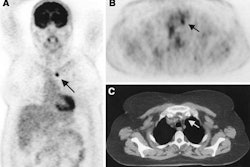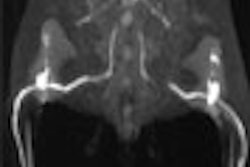Survivors of childhood acute lymphoblastic leukemia (ALL) who did not receive radiation therapy have life experiences similar to the general population, and may actually be less likely to develop second tumors, according to a study published in the New England Journal of Medicine. Based on this conclusion, the researchers from Memphis suggested that cranial irradiation for ALL may be an obsolete treatment plan.
"The implication of this study is that long-term survivors of ALL who did not receive central nervous system irradiation can expect long-term survival experience. Those who have received irradiation should be aware of the development of a second tumor (relapse), which can occur many years after treatment. Fortunately, most of the second tumors are low grade in malignancy and can be readily cured with early diagnosis and treatment," said Dr. Ching-Hon Pui, lead researcher and director of the leukemia/lymphoma division at St. Jude Children’s Research Hospital.
"In addition, we have a new definition for the term ‘cure’ for ALL patients as 10 or more years of complete cancer remission," Pui added. Pui’s co-authors are from the University of Tennessee Health Science Center, also in Memphis.
In this study, 856 patients who had received treatment between 1962 and 1992 were included. Fifty-six of these patients had significant adverse events, including eight deaths (not due to cancer recurrence), four relapses of the cancer, and 44 second tumors.
Out of the 41 tumors related to radiation therapy, most were benign growths or non-aggressive cancers. In the 597 patients who received radiation therapy, the risk for developing a second tumor was significantly higher when compared with the 259 non-irradiated patients.
Even 20 years after initial treatment of childhood ALL, second tumors appeared in patients who had received radiation to the head and/or spinal region, the group noted (NEJM, August 14, 2003, Vol. 349:7, pp. 640-649).
They found that those who did not undergo brain radiation as part of their treatment have survival, employment, and marital rates similar to the broader population. Conversely, children who did receive brain radiation had a marginal increase in death rate due to development of second cancer, as well as higher insurance and unemployment rates than the public at large.
In light of this study, "patients and physicians will be reluctant to use cranial irradiation for the prevention of central nervous system relapse. It is conceivable that one day, cranial irradiation will be omitted for all patients with childhood ALL. In fact, this is our approach (in the setting of a research protocol) in the past four years. We now use irradiation only for salvage therapy for patients with relapse in the central nervous system," Pui said.
By Jerry IngramAuntMinnie.com contributing writer
August 21, 2003
Related Reading
Vitamin D2 analog active against leukemia, myeloma, and colon cancer, June 24, 2003
CT diagnoses peripheral T-cell lymphoma, with limitations, April 22, 2003
Copyright © 2003 AuntMinnie.com



















